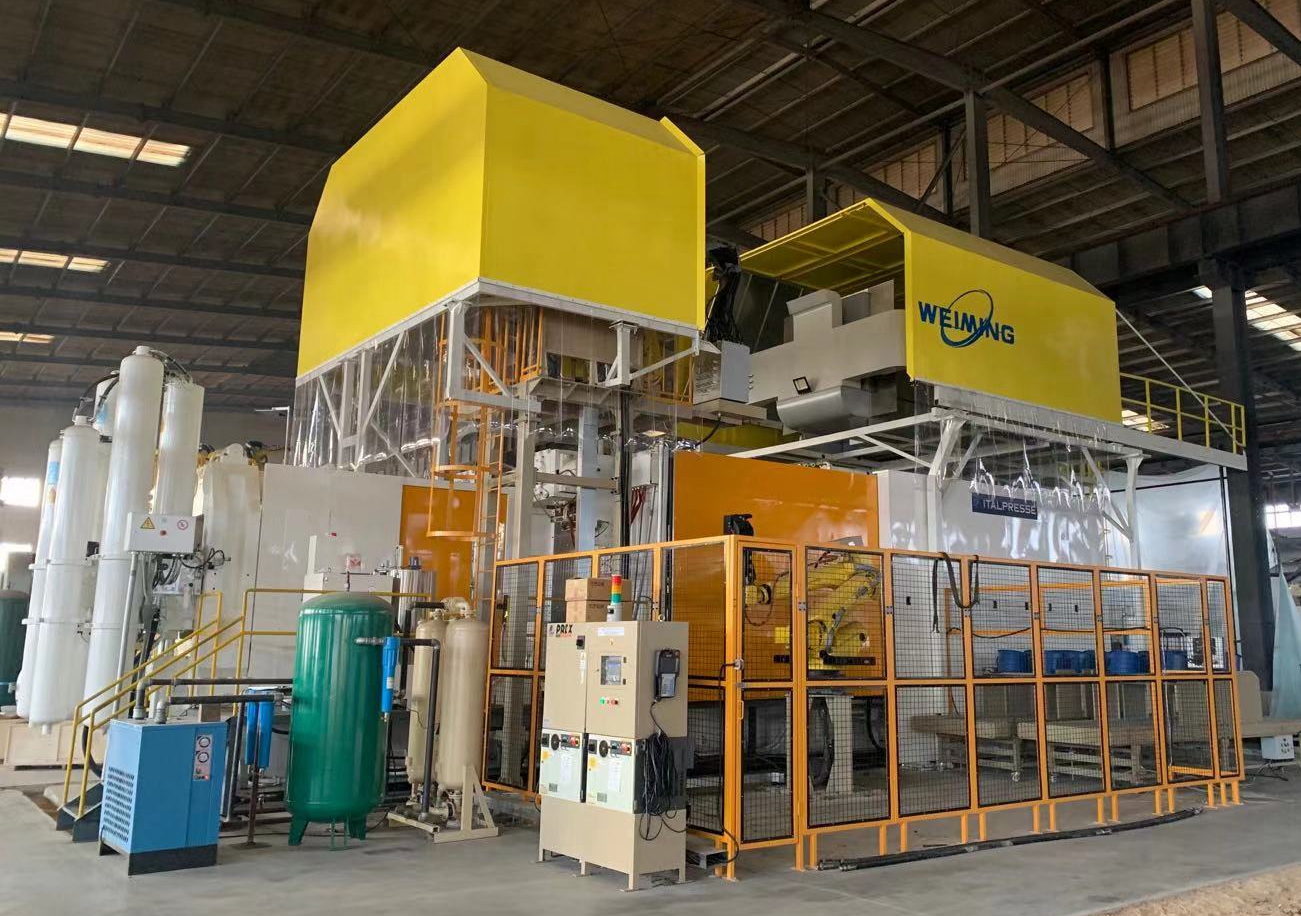
In the cold chamber die casting process, the corrosion problem is addressed by separating the melting pot from the injector components. The metal is transferred to the shot sleeve with a ladle, either manually or automatically.
The injection piston pushes the metal into the die in a single operation. This minimizes the contact time between the hot metal and the injector components, ultimately extending their operating life.
The cold chamber process allows for the casting of lower-melting-viable point alloys.
However, for metals like zinc and magnesium, the hot chamber process is generally more economically viable, despite the advantages of the cold chamber process.
Key Characteristics
Molten metal is injected into a chamber and poured into the mold under high pressure in a cold chamber casting. This manufacturing process offers better control over melting temperatures and is perfect for casting materials incompatible with hot chamber die casting.
Separating the furnace from the injection system prevents corrosion and allows rust resistance to extend the life of machine tools.
Advantages of Cold Chamber Die-Casting
Material Flexibility
Cold chamber die casting requires a lower temperature to melt the material compared to hot chamber casting, making it ideal for materials like aluminum and copper with low melting points.
Durability
It can effectively produce large volumes with durability features and excellent mechanical properties.
Precision
Cold die casting has the ability to create complicated parts with tight tolerances. This approach is extensively utilized in the automotive industry, medicine, and other industries where high precision is necessary.
Reduced Corrosion
Melting furnace separation helps the injecting system reduce the risk of corrosion, leading to longer-lasting equipment.
Versatility
It meets the performance requirements of various applications and allows for the use of multiple metal alloys.
Disadvantages of Cold Chamber Die Casting
Slower Cycle Times
The process of transferring molten metal from the furnace to the chamber increases production costs and reduces overall efficiency.
Higher Operating Costs
The separate melting and injection system requirements lead to higher initial setup and operating costs.
Limited to Specific Alloys
While versatile, this casting method is not suitable for materials with very low melting temperatures, which can be easily corroded.
Potential for Heat Loss
It requires precise temperature control to ensure consistent casting quality and avoid heat loss while transferring molten metal from the furnace to the chamber.





